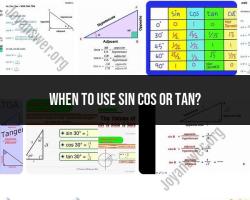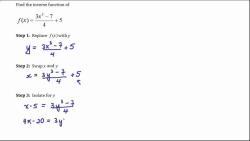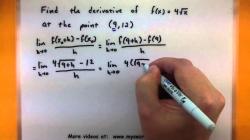How to find an antiderivative?
Finding an antiderivative, also known as indefinite integration, involves reversing the process of differentiation. To find the antiderivative of a function, you need to determine a function whose derivative matches the original function. Here's a step-by-step guide on how to find an antiderivative:
Understand the Notation:The antiderivative is typically represented by the integral symbol (∫) followed by the function to be integrated, with respect to the variable of integration. For example, ∫f(x) dx represents the antiderivative of the function f(x) with respect to the variable x.
Recognize Common Antiderivatives:Memorize some common antiderivatives. For example:
- ∫x^n dx = (1/(n+1))x^(n+1) + C, where n ≠ -1
- ∫e^x dx = e^x + C
- ∫sin(x) dx = -cos(x) + C
- ∫cos(x) dx = sin(x) + C
Apply the Power Rule:For functions in the form of x^n, where n is a constant (but not -1), apply the power rule:∫x^n dx = (1/(n+1))x^(n+1) + C
Apply the Exponential Rule:For exponential functions like e^x, the antiderivative is the same as the function itself:∫e^x dx = e^x + C
Use Trigonometric Identities:For trigonometric functions like sin(x) and cos(x), use trigonometric identities:
- ∫sin(x) dx = -cos(x) + C
- ∫cos(x) dx = sin(x) + C
Add a Constant (Arbitrary Constant of Integration):When finding an antiderivative, it's important to include the constant of integration, denoted as + C. This constant accounts for the possibility of multiple functions having the same derivative.
Apply Linearity:The antiderivative of a sum or difference of functions is the sum or difference of their antiderivatives:∫(f(x) + g(x)) dx = ∫f(x) dx + ∫g(x) dx
Watch for Special Cases:Some functions may require special techniques, such as substitution or integration by parts, to find their antiderivatives.
Practice and Verify:Practice solving antiderivative problems to become more proficient in identifying and calculating them. You can check your work by taking the derivative of your result to confirm it matches the original function.
Consider Definite Integration:In some cases, you may need to find a definite integral, which calculates the area under a curve between two specified limits. To do this, you'll need to evaluate the antiderivative at the upper and lower limits and subtract the results.
Finding antiderivatives is an essential skill in calculus, as it allows you to determine functions given their rates of change. Keep in mind that finding antiderivatives can sometimes be challenging, especially for complex functions, and it may require more advanced techniques like integration by parts or substitution.
How to Find an Antiderivative: Calculus Basics
Calculus is the study of change, and one of the most important concepts in calculus is the antiderivative. An antiderivative of a function is a function that, when differentiated, gives the original function.
To find the antiderivative of a function, we use a process called integration. Integration is the opposite of differentiation, and it can be used to find the area under a curve, the volume of a solid of revolution, and the length of a curve.
Fundamental Principles of Antiderivatives and Integration
There are two fundamental principles of antiderivatives and integration:
- The derivative of the sum of two functions is the sum of the derivatives of the two functions.
- The derivative of a constant multiple of a function is the constant multiple of the derivative of the function.
These two principles can be used to derive a number of antiderivative rules and techniques.
Step-by-Step Approach to Antiderivative Computation
To compute the antiderivative of a function, we can follow these steps:
- Identify the function whose antiderivative we want to find.
- Choose the appropriate antiderivative rule or technique.
- Apply the rule or technique to the function.
- Simplify the result.
Common Antiderivative Rules and Techniques
Here are some common antiderivative rules and techniques:
- The power rule: , where and is an arbitrary constant.
- The sum rule:
- The constant multiple rule: , where is a constant.
- The u-substitution rule: , where is a function of and .
- Integration by parts:
Applications of Antiderivatives in Mathematics and Science
Antiderivatives have a wide range of applications in mathematics and science. For example, antiderivatives can be used to:
- Find the area under a curve
- Find the volume of a solid of revolution
- Find the length of a curve
- Solve differential equations
- Model physical phenomena such as motion and heat transfer
Conclusion
Antiderivatives are an important concept in calculus with a wide range of applications. By understanding the fundamental principles of antiderivatives and integration, we can compute antiderivatives of a variety of functions and solve a variety of problems in mathematics and science.













